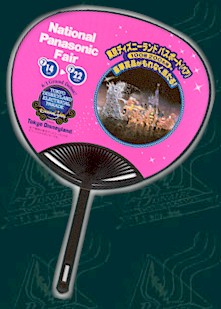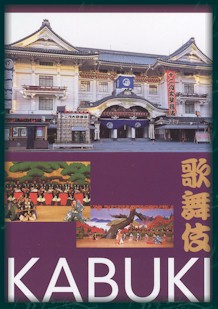 The Imperial Palace
The Imperial Palace
July 22, 2001
Early Rising
I'm not normally an early riser, but my sleep schedule was screwed up thoroughly after
yesterday's fun. So at a bright-and-early 7:00 am I woke up and did a little
exploring of the local neighborhood.
Even that early in the morning it was already scorching hot: I tried to stick to the
shade and not get too much sun (as I didn't have any sunblock on yet).
Still, I found lots of fascinating things. There were lots of colorful signs everywhere. Most of the food shops
had either pictures of what to buy or little plastic displays that looked like the real
thing (one even had dry ice simulating smoke above a fake grill!) The movie posters caught my eye: along with a lot of Hollywood
films, there were posters for anime films (at least half of the ads).
Another popular item was vending machines. They were everywhere: out on the
streets, in the alleys, in the lobbies of hotels, everywhere. And they served
everything: coffees, soft drinks, hot foods, cold foods, ice cream, you name it.
They were proof of how safe a city Tokyo is: vending machines left on the street in, say,
New York, wouldn't last five minutes!
I was starting to get hungry, so I decided to stop in a little diner for some
breakfast. With a little pointing, I managed to get myself an interesting egg dish,
with rice and covered with some sort of brown gravy and sausage. I was also served a
little bowl of miso soup (to my surprise). A tasty start to the day!
The Imperial Palace
I walked back to the Hotel to clean up (sweaty!) and wait for Miya. When he
arrived, we took the train from the Okubo station (right across the street) to the Imperial Palace in the center of Tokyo.
The Imperial Palace is located in the heart of Tokyo: it's similar to Central Park in
that sense: a large green garden surrounded by buildings. However, only part of it
is open to the public. The Inner Palace Court is opened to the pubic only on such
events as the birthday of "Ten-noh"; the Emperor (December 23), New Year's Day,
etc. On those days, people are allowed to enter the inner Palace Court to celebrate the
events together with the Imperial Families.
We entered through the East Gardens and had a look
around. Possibly because it was Sunday (or because it was so hot!) there was hardly anyone around. We walked around the gardens,
while I took pictures of the architecture and anything
else that struck my fancy.
We stopped several times at little rest stations all around the gardens, mostly to get
in out of the heat. At one place was a little museum showing ancient scrolls of
poetry. Interestingly, the poetry was often written stylistically as well: lines of
poetry would be drawn in diagonals, or wavy lines.
Exiting by a different gate, we walked next to the moat that surrounds much of the Palace. There were
lots of koi in the green water, who swam over to us the
moment they spotted us, begging for food by smacking their lips at us (actually, do fish
have lips?). In one corner stood the Sakuradniju
Tower, one of several watch towers.
Over the Niju-bashi bridge, we saw the Fushimi Yagura (one of the last turrets of the Old Palace:
the Imperial Palace had been destroyed many times by fire). This shot, by the way,
is one of the more famous views of the Imperial Palace. At least that's what it said
on the postcard...
 Eat! Eat now...
Eat! Eat now...
Feeling a bit tired from the heat, Miya and I took a cab to his favorite tempura
restaurant. Unfortunately, it was closed! So we had to settle for a famous
(though less good) tempura restaurant nearby. There we rested and fortified
ourselves for another venture out into the sun.
Akihabara
After lunch, we headed out to Akihabara, a high-tech area where anything and everything
electronic can be bought and sold. There were several young ladies handing out
various flyers and advertisements. One set had the bright idea to hand out little
fans! In the heat, they came in handy.
You can find absolutely anything in the shops in Akihabara: whole computers, circuit
boards, breadboards, wires, transistors, chips, anything. there were tons of
kiosks that seemed to specialize in only a few items: one would have CPU fans, another
would sell batteries (where I got a replacement battery for my camera, which had been
acting up), others would sell EEPROMs. Some of the kiosks were so tiny that they
barely fit the one guy doing the selling: more than once I wondered how the guy had got
into the booth in the first place!
It wasn't just bits and pieces, though: all sorts of new cameras, video recorders,
PDAs, GPS systems were also for sale. The selection was absolutely incredible, even
if the prices weren't: a lot of the items I could find at cheaper prices in the States.
However, there were lots of things (especially miniature items) that couldn't
be found anywhere else.
The place is a technophile's dream!
Rest and Kabuki
 We found a little cafe where we could get some iced coffee and relaxed a bit
before heading back to my hotel: I told Miya that I'd like to clean up a bit before
heading out to the Kabuki show he'd arranged for me. I was looking forward to seeing
what it would be like.
We found a little cafe where we could get some iced coffee and relaxed a bit
before heading back to my hotel: I told Miya that I'd like to clean up a bit before
heading out to the Kabuki show he'd arranged for me. I was looking forward to seeing
what it would be like.
After a quick shower, Miya picked me up and we headed over to Sunrise Tours.
Saying my goodbyes to Miya, I joined a small group of tourists on the same trip.
There were a few other Americans with which I conversted briefly as we waited for
our bus.
After a short time, we were taken to a bus and introduced to our guide, who attempted
to teach us a few words of Japanese (I'm not quite sure if he succeeded). Our first
stop was for dinner: we all went into a hotel for a meal of sukiyaki. Since I was
the only one alone, I got a table to myself. Dinner was OK, but nothing I hadn't
eaten in the U.S. (with the exception of the soft-boiled egg used as a sort of
"sauce" on the meat).
Dinner was followed by a trip to the Kabuki theater.
The facade was quite spectacular: it's a little
bit of the old Japan smack in the middle of the high-tech Ginza shopping district.
Inside we got headphones to translate the dialog (and explain some of the
background). As it turned out, we were only going to be seeing the last third of a
full show, but even that small part was a lot of fun!
Kabuki is a very stylized form of play that dates from the Edo period in Japan
(approximately 400 years ago). It is strictly a men-only performance (although women
are technically no longer banned), so even parts for women are played by men. There
are tricks that are used so that the same actor can play two characters at once: during
our show, one actor playing both a man and a woman appeared with his female character in
the same scene. A substitute played the part of the woman and kept her face away from the
audience!
Along with the stylized makup and traditional japanese music, another common feature of
some kabuki shows is the "air walk", where a character "flies" out of
the stage and over the audience. This is done by means of wires and a harness: our
seats were a few rows away from the air walk so we got a great view!
There was a fair amount of humor in the show, as well. In addition, really
devoted fans would shout out the names of their favorite performers during pauses!
After the show I headed out with the rest of the crowd and managed to make it back to
my hotel in one piece! I was starting to get the hang of the subway system, which
would serve me well in the days ahead...